24 Managing Interdisciplinary Research
Rhonda D. Davis
Managing Your Interdisciplinary Research Project
Here are some effective ways you can manage your interdisciplinary research projects:
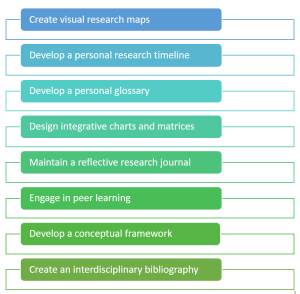
Creating visual research maps involves using diagrams or mind maps to visually connect concepts from different disciplines. This helps identify relationships between ideas and highlights areas where disciplines intersect. Developing a personal glossary as you conduct your research will help you maintain a list of key terms and concepts from each discipline involved, along with their definitions. This aids in bridging terminology gaps and ensures clear understanding across fields. Designing integrative charts and matrices will help compare and contrast methodologies, theories, or findings from different disciplines. This helps identify commonalities and differences. Don’t be afraid to develop a conceptual framework. You can create a personal theoretical or conceptual framework that shows how different disciplinary components of the research fit together.Maintaining a reflective research journal will help you regularly document thoughts, challenges, and insights about the interdisciplinary process. This promotes metacognition and helps track the evolution of ideas. Developing a personal research timeline to outline key milestones, literature reviews, and methodological steps for each discipline involved in the project. Create an interdisciplinary bibliography to organize references using software like Google’s Paperpile or Mendeley, tagging sources by discipline to easily track and balance input from different fields. Engaging in peer learning by forming study groups with students from other disciplines involved in the research can help facilitate knowledge exchange and help in understanding different perspectives.
By implementing these strategies, we can effectively manage the complexities of interdisciplinary research, ensuring a more organized, balanced, and integrated approach to our projects. These methods not only aid in managing information but also foster deeper understanding of the interconnections between disciplines.
Examples
Let’s consider a hypothetical example of a student conducting interdisciplinary research on the impact of climate change on coastal communities, combining elements from environmental science, sociology, and economics.
Concept Map
The student creates a concept map linking key ideas:
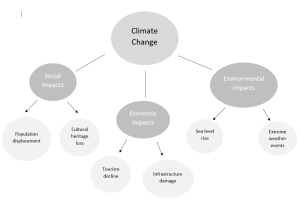
Interdisciplinary Glossary
The student maintains a glossary with terms like:
- Adaptive capacity (Environmental Science)
- Social resilience (Sociology)
- Opportunity cost (Economics)
Research Timeline
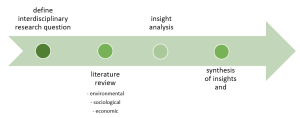
Synthesis Matrix
The student creates a matrix to compare approaches:
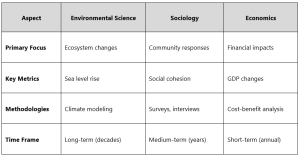
Integrative Framework
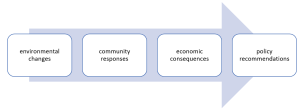
Using these tools, the student can effectively manage the complexity of their interdisciplinary research, ensuring that insights from each discipline are integrated cohesively. This approach helps identify gaps, overlaps, and synergies between the different aspects of the research, leading to a more comprehensive understanding of the issue at hand.